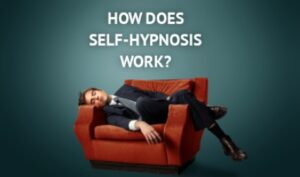 Chances are when you hear hypnosis, you think swinging pocket watches and talk of, “you are now getting very sleepy.”
Chances are when you hear hypnosis, you think swinging pocket watches and talk of, “you are now getting very sleepy.”
That’s Hollywood’s hypnosis. The real thing doesn’t put you under a spell. It doesn’t make you blackout. No one is going to convince you to cluck like a chicken upon waking.
But what it can do is calm anxiety, numb pain, induce sleep, and balance your nervous system.
If that sounds strikingly similar to meditation — well, you’re spot on. Except during hypnosis, you’re guiding the thoughts rather than letting them pass by. You are very much driving the car — but without any effort, like zoning out on your regular route home.
“Self-hypnosis, meditation, and other forms of mind-body wellness may help us bring our whole body — the immune system and the brain — into a more effective balance,” says Tampa-based therapist LindaJoy Rose, Ph.D., current director of the Natural Wellness Academy and former director for the American Board of Hypnotherapy.
And once you know the base of hypnosis you can apply it toward anything, including minimizing the constant anxiety and rumination of the current pandemic. Here’s everything you need to know:
What is hypnosis?
You might remember from Psych 101 that you have two states of mind: the conscious, which is the tip of the iceberg above water, if you will — the active, analytical, problem-solving, and worry-creating part of your awareness; and the subconscious, which holds everything just below the surface, like suppressed feelings, reflexive judgments, and underlying motivations.
awareness; and the subconscious, which holds everything just below the surface, like suppressed feelings, reflexive judgments, and underlying motivations.
These are things you don’t actively think about but could bring into conscious awareness if you needed.
Hypnosis essentially tells your consciousness to take a backseat and lets you turn your attention inward to that deeper sense of the unconscious self, according to a 2018 analysis in Psychoanalytic Review that reports the practice temporarily suspends the mind’s critical faculties.
It works like this: In the beginning, either an in-person therapist or an audio guide is leading you with their voice. Just like with meditation, you’re focused on their voice and are practicing letting go of control over your thoughts. The guidance tells you what kind of images and thoughts to become absorbed in, then how to direct that toward healing activity within.
That state is called a hypnotic trance. You are in control the whole time — one of the biggest misconceptions of hypnosis is that it’s done to you, but really, you’re guiding your thoughts, says Steven Gurgevich, Ph.D., a psychologist based in Tucson, AZ who has been teaching and practicing hypnotherapy for over 40 years.
And you’re totally aware of what’s happening the whole time. Just like how you can hear the TV making noise but not actually be listening, or stare out the window in a daydream without actually seeing what’s going on, hypnosis allows you to direct your thoughts without actually engaging your mind, Dr. Gurgevich points out.
That’s because going into a hypnotic trance changes what parts of your mind are activated.
One study out of Stanford University looked at the brains of people during guided hypnosis and found less activity in two key areas.
The dorsal anterior cingulate, which is in charge of thinking and motor control, and the dorsolateral prefrontal cortex, which points to a disconnect between someone’s actions and their awareness of their actions.
This uncoupling lets you take part in activities without bringing your consciousness into play.
 What’s more, the Stanford team found that during hypnosis, there is more connectivity between two parts of your mind that foster a stronger brain-body connection.
What’s more, the Stanford team found that during hypnosis, there is more connectivity between two parts of your mind that foster a stronger brain-body connection.
In a trance, your brain is processing and controlling what’s going on in the body better than normal.
Which brings us to a key point: The words you think and pictures you imagine have real power over your brain.
Studies show just hearing words associated with physical suffering actually activates the areas of your brain responsible for pain perception compared to neutral words.
Reading a list of negative words, even briefly, makes anxious and depressed people feel more of it.
Hypnosis helps reduce unwanted feelings by repeating positive thoughts so they have the opposite effect, instead of acknowledging that pain, you focus on feeling full of healing energy, happiness, and ease of movement which puts less attention on your pain receptors.
Instead of recognizing, and then thinking about, feeling anxious, you direct your subconscious on remaining calm and maintaining a balanced state.
What is hypnosis used for?
Hypnosis, visualization, and meditation are all siblings of the same family. The main difference is clinical hypnosis is used for a specific purpose — a tool to put your consciousness on standby and allow your mind to focus on some form of healing or action.
“There is less resistance by the conscious — the more ‘judgmental’ part of the psyche — so that through repetition one can change negative habits and instill positive ones,” Dr. Rose explains.
Super important fact: Your subconscious is also responsible for regulating all your bodily functions, including your lungs, heart, brain, digestion, nervous system, immune response.
That’s how your organs function without active thought. And because your subconscious is now driving the car, there seems to be a “communication highway directly to the bodily system,” Dr. Rose says.
Among other things, this allows you to reach your autonomic nervous system, calming the fight-or-flight response from stress which you might not have even known was working away.
Studies show it has real power: Practicing hypnosis regularly can help you sleep better, control cravings for bad-for-you foods, and reduce stress.
One case study out of Pakistan found adding hypnotherapy to cognitive behavioral therapy (CBT) treatment significantly sped up the improvement of depressive symptoms. Combining self-care and self-hypnosis significantly improved energy levels, sleep quality, depression, anxiety, and worry in cancer patients, reports a 2020 study in Psycho-oncology.
It’s also frequently used to alleviate all levels of pain, including for those suffering a one-time burn, regular IBS symptoms, and dying from painful diseases.
How can hypnosis boost immune system?
Perhaps most interestingly, guided imagery and relaxation techniques like hypnosis may help fortify your immune system.
According to a 2016 study analysis in the Annals of the New York Academy of Sciences, meditation alone has the power to reduce the number of certain molecules that create inflammation, boost healthy T-cell counts among sick patients, and improve activity of telomerase, a protective DNA and proteins that help healthy cells multiply.
Dr. Rose adds that there is such a thing as an over-heightened immune response, and that balancing your immune system may actually require reducing stress more than anything else, rather than just controlling it.
But being able to calm your nervous system can prevent stress from raising levels of hormones that cause inflammation. This inflammation can, in turn, set off a chain of events in the body that can make you more susceptible to catching viruses.
No, hypnosis is not going to be the medical prevention for coronavirus — but learning to relax and empower your mind can help you maintain your wellbeing, health, and immunity, Dr. Gurgevich says.
How to I try hypnosis at home
Hypnosis doesn’t work on everyone — roughly 10% of the population is too resistant to persuasion, according to Stanford researchers. But another 10% are highly impressionable and therefore ideal candidates for hypnosis.
That leaves 80 percent of people falling somewhere in the middle meaning self-hypnosis is worth a try.
 The only requirement is that you have to cast aside doubt and be open to the idea that guided visualization and thoughts really do have power, Dr. Gurgevich says.
The only requirement is that you have to cast aside doubt and be open to the idea that guided visualization and thoughts really do have power, Dr. Gurgevich says.
Start with 15 minutes, three times a week
The focus of your hypnosis, anxiety, immunity, pain and personal process will influence how long your trance should be. But for the first few weeks, 15 to 20 minutes should help you get familiar with the process.
You could feel results immediately, particularly for something like pain reduction, Dr. Gurgevich says. But the real power comes from rehearsal, so the effect will always get stronger with time and frequency.
Look for guides from credentialed hypnotherapists
If you’re interested in hypnosis for a clinical issue like an anxiety disorder, you’ll see the most benefit from working directly with a licensed hypnotherapist.
But everyday stress, worries, or sleep troubles can benefit just from using guided audio. Quality still matters. Dr. Gurgevich suggests confirming the practitioner is a member of and certified by the American Society of Clinical Hypnosis or the Society for Clinical and Experimental Hypnosis, which ensures state licensure and accredited education.
Download a hypnosis app
There are tons of hypnosis videos on Youtube and recordings on Spotify, but using an app like UpNow, HelloMind or Hypnobox is a great way in for beginners.
They’re easy to navigate, you can track which recordings you’ve already tried and like, and it will usually nudge you with reminders if you haven’t logged on in a few days.
By: Rachael Schultz









